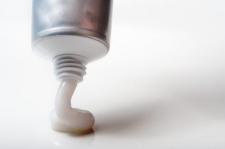Skin and Periwound Care- Part 2
In part 1, we discussed the risk factors contributing to periwound breakdown. Now let’s turn our attention to prevention.
Prevention of Periwound Damage
There are five keys to preventing periwound damage. These are:
- Identifying patients at high risk for periwound skin damage (discussed in part 1 https://woundeducators.com/periwound-care/)
- Minimizing contact of the periwound skin with wound drainage (exudate)
- Using an appropriate barrier to protect periwound skin
- Using dressings that will not cause trauma to the vulnerable periwound skin on removal
- Treating any underlying pathology
Minimizing contact of the periwound skin with wound drainage (exudate)
One way to minimize contact with wound drainage and prevent maceration of the periwound is to choose the appropriate dressing for wound conditions. This can be a tricky balance between maintaining just the right amount of moisture in the wound bed- too dry and the wound bed becomes desiccated, too wet and maceration soon follows. Fortunately, modern dressing are far superior to dressings of old and offer superb absorption and adhesive properties, which means that maceration and skin trauma due to dressing removal are far less common than they once were.
Using an appropriate barrier to protect periwound skin
There are several barriers available that can effectively protect vulnerable periwound skin. Some of these include:
- Zinc oxide- zinc oxide pastes and creams can be applied to the periwound area to form a protective barrier; a disadvantage is that they can be messy and difficult to remove
- Acrylate sprays- these sprays provide a barrier that is easy to apply and does not need to be removed; an advantage is that it is easier to apply a dressing over this type of barrier, as opposed to a paste or cream.
- Hydrocolloid dressings- if the periwound is already damaged, a hydrocolloid dressing can be applied to the periwound skin, while a different type of dressing is applied to the wound itself; however, there is a risk of formation of hypergranulation tissue under the hydrocolloid dressing when these dressings are used long-term
- Reducing MMPs- pH buffers and protease modulators can be used to reduce protease activity in wound exudate, which can lead to skin damage; keeping the pH of the wound between 4.5 and 6 will keep protease activity at an acceptable level
- Removal of biofilms- biofilms on the surface of the wound can lead to elevated levels of MMPs in wound fluid, which can in turn lead to breakdown of the periwound skin; debridement and application of a surface antibacterial agent can remove biofilm and prevent them from returning
Using dressings that will not cause trauma to the vulnerable periwound skin on removal
Skin stripping caused by dressing removal and wound adhesives can cause inflammation, swelling and pain, which can negatively impact wound healing, as well as decreasing patients’ quality of life. Using dressings with soft silicones can help reduce the risk of skin stripping. At every dressing change, the periwound should be assessed carefully for signs of damage.
Treating underlying pathology
Bacterial infections, fungal infections, contact dermatitis and other skin conditions can lead to breakdown of the periwound. Being alert for signs of underlying pathology is important in preventing periwound damage, and can also be important in identifying causation in wounds that have failed to progress in healing.
The periwound is vulnerable to breakdown and should be zealously protected. Failure to protect the periwound can lead to an increase in wound size, increased pain and failure to heal.
If you enjoyed this article, you may consider becoming certified as a wound care professional. Wound Educators is the premier online wound education site, preparing professionals to become nationally certified. If you would like to learn more about becoming a certified wound care professional, please contact us.
Sources:
Moisture-Associated Skin Damage (MASD). Wound Source. http://www.woundsource.com/patientcondition/moisture-associated-skin-damage-masd
Lawton, S. & Langoen, A. (2009). Assessing and managing vulnerable periwound skin. World Wide Wounds. http://www.worldwidewounds.com/2009/October/Lawton-Langoen/vulnerable-skin-2.html


Hi Laura I have a sacral wound that’s healing and no drainage I’m the treatment nurse at my new job and the lady that trained me stated they use mesalt on the wound bed. I looked up mesalt and that was used for heavy drainage. What do you suggest the wound is 2.0×0.5×0.0cm
I recommend finding a certified wound care nurse in your area. You can find a wound specialist here: https://portal.abwmcertified.org/ABWMweb/Directory/ABWMcontent/Directory.aspx